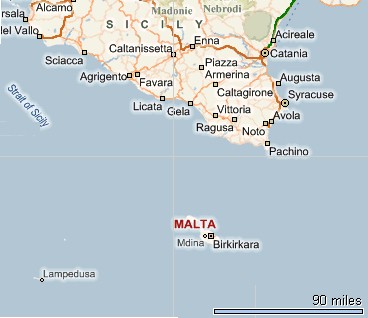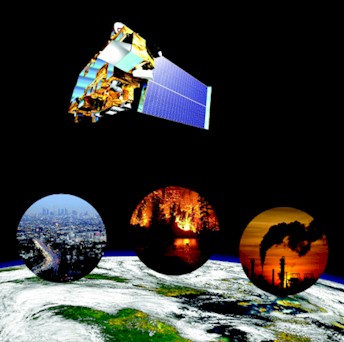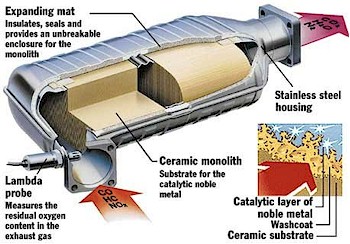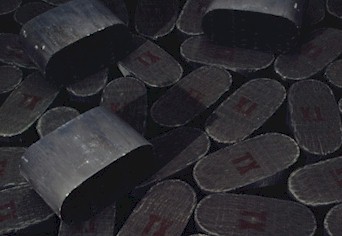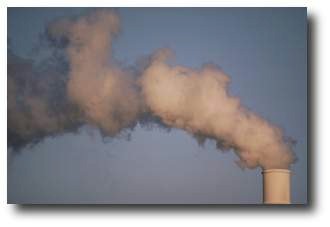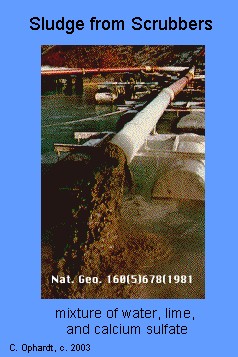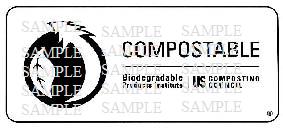|
Mainland High School
Lord of the Trash Rings: ISTF 09-2004 |
||||||||||||||
|
Home
Introduction Contest Components One Two  Product Product
Three Background Environmentalism History of Plastics Marine Laws Plastic Properties Pollution Laws Research Groups The Oceans Waste Management Project Assessment Team |
Component One
Prepare a 200- to 300-word history about the National Critical Technology (NCT)
technical application your team has selected to solve a local or national problem.
Pollution is not a new problem to mankind. It has been documented that the Romans created
vast sewer systems to get rid of their human waste. The need to dispose of waste
has grown just as the human population has grown. With the
growth has come the need to not only dispose of human waste but also to
cope with industrial, chemical, and just massive amounts of trash. Moreover, new
technologies have brought with them new pollution sources that have, more often
than not, been accompanied by severe and unexpected
disasters, illnesses, and deaths. Some of these catastrophies are:
Cite three detailed examples of research done in the past 3 to 5 years which focused
on the NCT technical application your team selected. Include:
 the funding agency, the funding agency,
 the principal investigator's name, and the principal investigator's name, and
 the institution where the research is or was being conducted. the institution where the research is or was being conducted.
We chose the following three grants to illustrate how pollution concerns are being
funded and researched. The first one deals with mapping plastic pollution in the Pacific,
the second one deals with plasma gasification as a method of municipal waste management,
and the third one deals with cleaning up oil spills in the Mediterranean near Malta.
Grant 1: In 2009, the state of California's Whale Tail License Plate granted $8,350 to the Algalita Marine Research Foundation (AMRF), raising their budget for their studies on the "Garbage Patch" to $38,248. The goal for the AMRF's project is to develop a website featuring research maps and results using geographic information system, or GIS technology, illustrating what is known about the quantity and concentration of plastic debris in the Pacific Ocean. While targeting a wide-range of age groups, the website will also provide high-quality technical data that can be used by other researchers. Grant 2: In 2007, the state of Minnesota granted $400,000 to Koochiching Economic Development Authority (KEDA) for a plasma gasification feasibility study. Dr. Louis Circeo, director of plasma research at Georgia Tech Research Institute, has proposed an operation that converts garbage and biomass into usable fuel through superheating in an oxygen-deprived container. This process would provide a technological alternative to land fills and a more efficient disposal of plastics. Grant 3: In 2005, Maltese Maritime Authority (MMA), headed by Chris Farrugia, originally submitted a request to fund a €1,000,000 project for oil spill management. Malta has one-fourth of the world’s oil tankers traveling in its waters, and they easily run the risk of an oil spill. They are not currently equipped to handle a large oil spill; consequently, they would spend an inordinate amount of time waiting for assistance rather than containing and cleaning up the spill. In 2008, an €800,000 grant was awarded by European Economic Area (EEA) in Norway leaving MMA responsible for funding the remaining 20%. As of 2009, through project MT0010, MMA has contracted approximately €200,000 of its funds. In addition to our three grants, we have also identified three patents that directly relate to our project.
Based on the research your team has done, explain how the NCT application chosen
has advanced scientific knowledge.
Scientific advances often come at a sacrifice to the environment. Sometimes in using
new technologies to solve current problems or create new conveniences, we generate
additional unforeseen pollution problems. Many times, the resulting pollution is
more pervasive and dangerous than we could have ever predicted. Three situations
showing how technology has come to the aide in monitoring and/or controlling pollution
are methane and carbon monoxide emissions, acid rain, and lessening the repercussions
of our current plastic, throw-away, society.
In December, 1999, the people of the Canadian Space Agency realized the hazard of worldwide carbon emissions. They launched the Measurements of Pollution in the Troposphere (MOPITT) experiment on board NASA's Terra Satellite. The experiment monitors methane, CH4, and carbon monoxide, CO, discharges using gas correlation spectroscopy. Improved quantitative data of the source strengths of distributions of methane will assist scientists in being able to understand biogeochemical cycles. A video from NASA's Goddard Space Flight Center (globe3d.wmv) shows 10 months of emissions in 2000. The large plumes from Africa and South America are believed to be forest and grassland fires, while the red zone in Southeast Asia is thought to be an industrial emission. Acid rain was originally recognized by Robert Angus Smith in 1852, when he noticed that emissions from local factories were damaging plants in neighboring forests. Acid rain came to the forefront of the news during 1960's and 1970's. This rain was mostly caused by the sulfur dioxide emissions from large industrial sites and the discharge of nitrogen oxide from automobiles. In an effort to fix this problem the 1970 Clean Air Act was passed by the Environmental Protection Agency. This act called for a 90-percent cut in automobile emissions for new cars by 1975. The mandatory product placed in cars to decrease their emissions of carbon monoxide, volatile organic compounds, and nitrogen oxides was the catalytic converter. However, with every solution, comes a new problem, in this case how to safely recycle used converters.
The use of scrubbers were implemented by power plants across the United States to catch sulfur, nitrogen oxides, and mercury emissions from their coal furnaces. These wet scrubbers effectively reduced the sulfur dioxide emissions by 80-95 percent by forcing the exhaust gases through a spray of lime water to produce a solid called calcium sulfate. Dry scrubbers, also known as electrostatic technology, can also be used to separate charged smoke particles thereby creating a dry waste product. In Februarym 2008, Georgia Tech announced a new solid absorbent called hyperbranched aminosilica that could capture 7 times more carbon dioxide. This new absorbent could be recycled and reused. In 1998, TVA and local farmers discovered that scrubber sludge when applied as a fertilizer improved soil and increased crop yields. Later, construction companies also wanted to capitalize on the sludge since calcium sulfate, also known as gypsum, was a raw material used to make wallboards. What was once a pollutant has become a valued resource.
In January, 2008, The Science Tech Entrepreneur stated that "the total volume of plastics produced worldwide has surpassed that of steel and continues to increase." As we consider a solution to our current dilemma with discarded plastic and its subsequent pollution, new types of plastic will become more commonplace. While oil-based polymers can degrade through exposure to light, heat, and especially stress, there are plastics that are made from starch that can be completely broken down by composting. These green plastics, or bioplastics, are just now becoming cheap enough to be used commercially. On Earth Day 2010, Frito-Lay will introduce a compostable SunChips bag to signal the beginning of its green packaging effort.
Acid Rain - Causes http://library.thinkquest.org/26026/Environmental_Problems/acid_rain_-_causes.html Acid Rain in New England http://www.epa.gov/NE/eco/acidrain/history.html Acid Rain - Solutions http://www.elmhurst.edu/~chm/vchembook/197acidrainsoln.html Backgrounder on the Three Mile Island Accident http://www.nrc.gov/reading-rm/doc-collections/fact-sheets/3mile-isle.html California Coastal Commission http://documents.coastal.ca.gov/reports/2009/5/W28a-5-2009.pdf Chernobyl Accident http://www.world-nuclear.org/info/chernobyl/inf07.html Composition for forming water-permeable material http://www.google.com/patents?id=RPoYAAAAEBAJ&printsec=abstract&zoom=4&source=gbs_overview_r&cad=0#v=onepage&q=&f=false EPA Milestones http://www.epa.gov/OMS/invntory/overview/solutions/milestones.htm Exxon Valdez oil spill http://www.eoearth.org/article/Exxon_Valdez_oil_spill Fair winds in Denmark - environment - Brief Article http://findarticles.com/p/articles/mi_m1594/is_4_12/ai_76020603/ Global Warming Fast Facts http://news.nationalgeographic.com/news/2004/12/1206_041206_global_warming_2.html Guide to Geographical Information Systems http://www.gis.com/ How Catalytic Converters Work http://auto.howstuffworks.com/catalytic-converter.htm Intergovernmental Panel on Climate Change http://www.ipcc.ch/organization/organization_history.htm KEDA Press Release http://www.businessupnorth.com/pr_0507_1.shtml Koochiching Economic Development Authority http://www.businessupnorth.com/ NASA/CSA Monitor Provides Global Air Pollution View http://www.gsfc.nasa.gov/gsfc/earth/terra/co.htm Ozone Loss: The Chemical Culprits http://www.beyonddiscovery.org/content/view.page.asp?I=89 Pollution: a brief history http://www.eoearth.org/article/Pollution:_a_brief_history Pollution Issues http://www.pollutionissues.com/Fo-Hi/History.html Pollution History http://www.pages.drexel.edu/~ral28/histor~1.htm Public Health Assesment http://www.atsdr.cdc.gov/hac/pha/pha.asp?docid=634&pg=1#back The Donora Fluoride Fog http://www.fluoridation.com/donora.htm The Fungus among Us: Use of White Rot Fungi to Biodegrade Environmental Pollutants http://ehp.niehs.nih.gov/docs/1993/101-3/innovations.html The Love Canal Tragedy http://www.epa.gov/history/topics/lovecanal/01.htm US Patent 5085998 - Biodegradation of 2,4,6-trinitrotoluene by white-rot fungus http://www.patentstorm.us/patents/5085998/claims.html US Patent 5958264 - Plasma gasification and vitrification of ashes http://www.patentstorm.us/patents/5958264.html |
